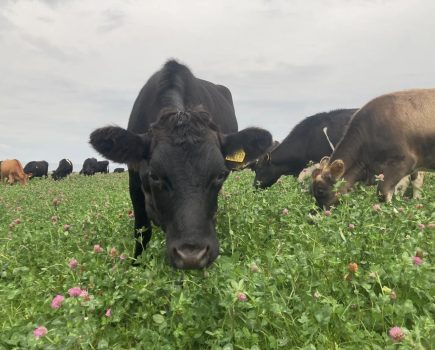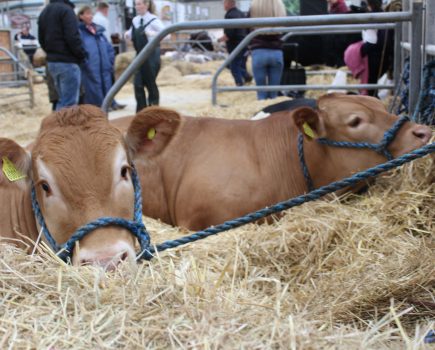Liz Shankland, the author of the Haynes Pig Manual, explains an aspect of keeping pigs which often confuses beginners – how to correctly identify your animals.

The internet is a wonderful resource when you need a quick answer to a burning question; information is at your fingertips within seconds.
Like lots of smallholders, I use my computer every day, sometimes for research purposes, sometimes to chat to like-minded people on smallholder forums or via social media. Lately, though, I’ve been dismayed to see a huge increase in the amount of misinformation being bandied about with regard to keeping livestock.
There are countless website forums and Facebook groups aimed at newcomers which play an important part in helping those just starting off. However, it’s not unusual to see beginners posting queries which are, in turn, answered by others who are only marginally more experienced. Often the quack ‘solutions’ to veterinary queries provided by these helpful amateurs are, at best, inaccurate – and, at worst, dangerous and sometimes illegal.
Health and welfare misinformation is the most alarming, but dodgy advice about rules and regulations is a real concern, too. With regard to pigs, a subject which comes up time and time again is that of identification. Too many people who start breeding pigs just don’t understand the tagging and movement rules, and if a customer comes along who has never kept pigs before, it can be a case of the blind leading the blind. To make matters worse, Defra’s own website information is confusing and ambiguous and desperately needs revising. So, with all this in mind, here is the definitive guide to the regulations in England, Wales, and Scotland.

Buying pigs up to 12 months old
If you are buying pigs which are less than a year old – whether they are weaners to raise for meat, non-pedigree breeding stock, or pets – they DON’T need to be tagged to move to your holding. Occasionally, breeders cause confusion by applying tags which bear their own herd number before selling. Sometimes this is because they may, originally, have intended to keep the piglets themselves; they may routinely tag to distinguish which piglets belong to which sow, if they regularly mix litters; or they may simply just not understand how identification works.
Ideally, when you buy your meat pigs, they should not be tagged. This is because, when they reach slaughter weight, they need to be sent to the abattoir with a form of identification that bears YOUR herd mark – not the breeder’s (more on this later). Your herd number is given to you by the Animal and Plant Health Agency (APHA) when you start keeping pigs and is normally two letters and four numbers. Mine, for instance, is GL0171.

The only form of identification required for pigs under 12 months which are moving from the holding of birth direct to a new holding is a temporary paint mark, made with a coloured spray (the kind you frequently see used on sheep). This can be a spot, a stripe, a cross – any shape and any colour you choose – as long as it lasts until the end of the journey from the first holding to the next.
When they arrive on your land, your pigs will NOT need to be identified with your herd number until or unless they leave – e.g. if they go for slaughter, are sold to another person, or travel to a show or other event. So, if you planned to keep your pigs forever, and they never moved off your holding, they would never need identification.
All movements of pigs, regardless of age, type, destination, and whether pedigree or non-pedigree, need to be pre-notified via the online animal movement systems – eAML2 (www.eaml2.org.uk) in England and Wales and ScotEID (www.scoteid.com) in Scotland. The pigs’ identification details are required to complete each online licence.
Moving bought-in pigs from your holding
If you want to sell pigs to someone else or at a livestock market, they have to be tagged, slap-marked, or tattooed with your herd number. Unless a pig is pedigree (see below), a single tag – plastic or metal – carrying the ‘UK’ prefix and your herd number is sufficient. If the pig was bought with an ID mark, and is going anywhere apart from the abattoir, it can move with the breeder’s herd mark – there is no need to add yours. If it was born on your holding, is under 12 months, and is moving direct to a new holding (i.e. not via a market), a temporary paint mark should be used.
Identifying pedigree pigs
A pedigree pig is one registered with the British Pig Association (BPA) or, in the case of British Lops and KuneKunes [NOTE – ONE WORD WITH TWO CAP ‘K’S], with the relevant breed society. When buying pedigree pigs, regardless of age, they need to a) have a tag with the breeder’s herd mark and the ‘UK’ prefix, and b) carry the appropriate breed society identification. In the case of light-skinned pigs, this is a tattoo which is comprised of an individual number, and, if desired, the breeder’s Herd Designation Letters (HDL). The HDL is a three-letter mark given to breeders on registration with the BPA (see picture).
Dark-skinned pigs are notched as well as tagged (although Oxford Sandy & Blacks also have the additional option of being tattooed). Different parts of the ear are used to represent different amounts – units, tens, hundreds, and thousands. The correct number of notches must be inserted in the correct location to create a pig’s individual number. The notching systems vary between breeds, so contact the relevant breed society for details. The notch is made by cutting a small V or U-shaped chunk out of the ear with sharp notching pliers. To find out more about the technique of notching, watch breeder Chris Impey’s excellent three-part guide on YouTube. Search on ‘Ear Notching Berkshire Pigs’.
Breeders who prefer not to notch or tattoo can choose to insert a tag in each ear, but they must inform the BPA (or the relevant breed society). Each tag must carry the HDL and ear number on one side and the herdmark on the other side. Pigs which are double-tagged in this way but not tattooed or notched cannot take part in BPA-accredited shows. If pedigree pigs are sent to slaughter, the rules are the same as for any other pigs (see below), regardless of whether they have been tattooed or notched.
Movements to slaughter
Any pigs moving to an abattoir from your holding – whether born there or bought in – must be identified with YOUR herd mark. For this reason, it’s best NOT for bought-in pigs to already carry the breeder’s identification. However, if you buy at market, there is no way to avoid it, because they need to be identified in order to be sold there. If your pigs are already identified, you still need to apply your own herd mark, but you will need to make it clear on the movement licence which mark is yours. Defra recommends any original tags should be removed before yours are applied – unless doing so is likely to cause a welfare issue. I wonder whether any Defra officials have ever tried to remove a tag from a strong, feisty pig? The easier and more sensible option is to add your own tag, but make it clear on the movement document which mark is yours.
Ways of applying your herd mark
Tagging: Probably the easiest form of identification. Tags can be ordered from online suppliers or feed merchants and will be imprinted with the “UK” prefix and your herd mark. Metal tags are preferred for pigs going to slaughter, because they withstand the heat used in the de-hairing process; not all plastic tags will. Metal tags are inevitably easier to apply.
A slap-mark: This is a tattoo of your herd mark which is applied to each shoulder with something resembling an over-sized fly-swatter covered in ink. There is no need for the “UK” prefix. If done correctly, a slap-mark will still be on your carcass when you get it back. If you slap-mark a coloured pig, you will also need an ear tag.
An ear tattoo: This is a tattoo of your herd mark, applied with a tattoo pliers. There is no need to prefix it with “UK”. People often get confused when they hear the word “tattoo”. This is NOT the kind of tattoo applied for pedigree breeding – this is a herd mark tattoo. Even if a pig carries a pedigree tattoo, it will still need to be identified by either a herd mark tattoo, tag, or slap-mark when it goes to slaughter.
FOOTNOTE: Some abattoirs are known to be less strict than others when it comes to accepting pigs and may accept pigs bearing the herd mark of the previous owner, or even pigs without tags. However, this doesn’t make it right. Stick to the rules and you won’t land yourself in trouble.
Image(s) provided by:
Archant
Archant
Archant







